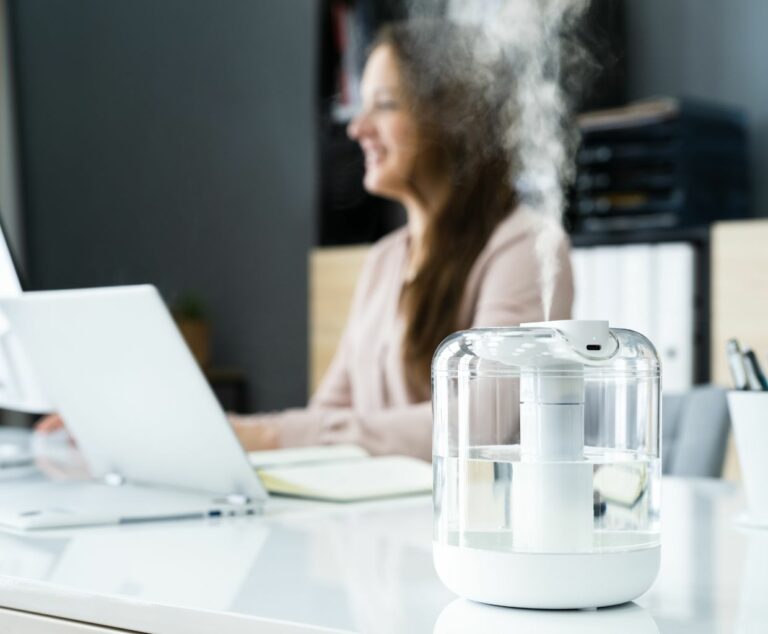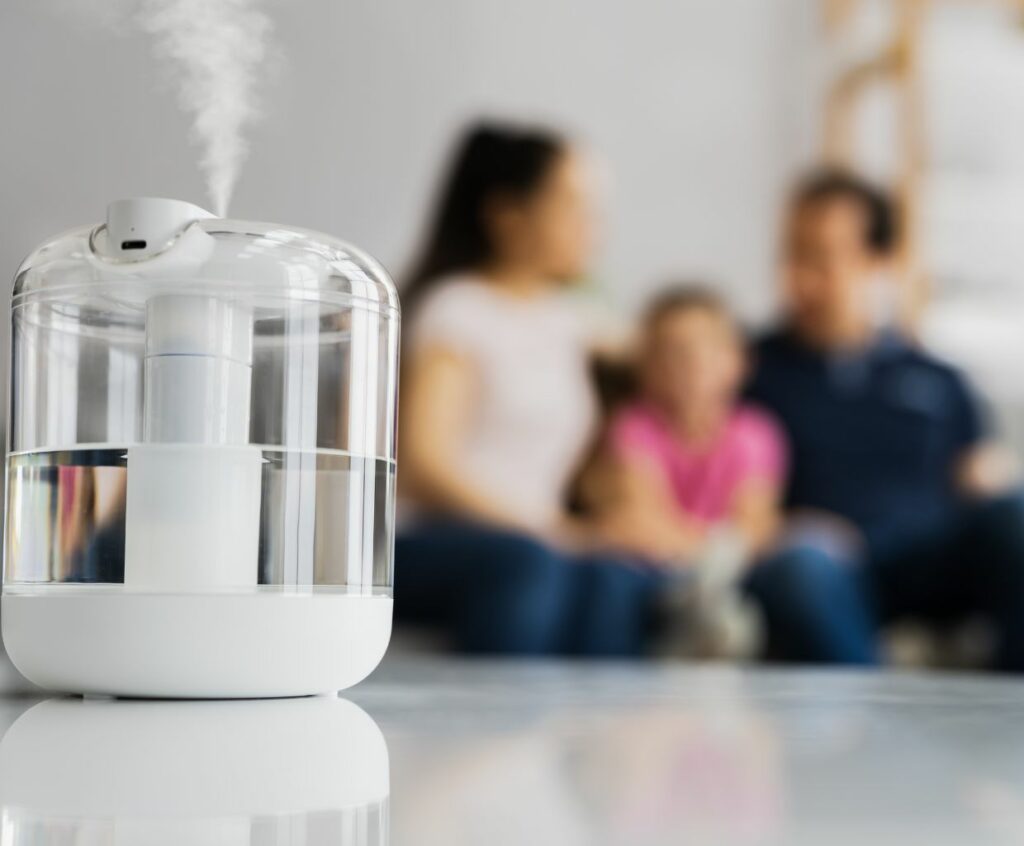The best way to keep your humidifier clean is to use sterile water. If you use tap water in your humidifier, these minerals and dust will enter the air along with the vapor from the humidifier. You can also use distilled or demineralized water instead of tap water, eliminating almost all contaminants.
To sterilize your humidifier, let it dry completely before refilling it with water. Clean Your humidifier steam cleaners help sterilize places where bacteria tend to flourish, but they don’t necessarily cleanse a humidifier of every bacterium. Ultrasonic humidifiers are more energy efficient than other types and provide a finer mist infused with negative ions that supposedly purify the air.
Content Summary
- 1 How do you think you could keep your humidifier clean?
- 2 How do you keep a humidifier sterile?
- 3 Using Tap Water In Your Humidifier
- 4 Clean Your Humidifier by Using a Steam cleaners
- 5 Ultrasonic humidifiers
- 6 Self-cleaning humidifiers
- 7 What is the healthiest type of humidifier?
- 8 Clean Your Humidifier – Conclusion
How do you think you could keep your humidifier clean?
It is easy to keep your humidifier clean and sterile if you use sterile water and run it dry before refilling it. Using sterile water in your humidifier makes it easy to keep it clean and sterile. Most often, the build-up problem results from minerals and dust from the water you use in your humidifier.
If you add sterile water to a dirty container, this will not clean it out. Instead, bottled or distilled water can be a better option than tap water for health reasons and to reduce cleaning time because there are no chemicals that need to be removed before use with our products. It also ensures an even distribution of moisture throughout the room by minimizing evaporation through steam vents so that your family doesn’t needlessly feel cold air coming out when they’re trying to stay warm during those winter months when everyone’s home is cooped up inside all day long!
The easiest way to clean your humidifier is to use sterile water.
- Get a bottle of sterile water from the drugstore.
- Fill the bottom of the humidifier with sterile water, then add more pure water to fill it up to where you usually top it off with regular tap water.
- Turn on your humidifier and let it run for several hours until all the water has evaporated through the filter (or until all the foam is gone). This can take anywhere from 6 to 12 hours, depending on how dry your home is and how much humidity you need.
- Clean out any remaining mineral deposits inside the base with vinegar or baking soda.
How do you keep a humidifier sterile?
If you want to keep your humidifier sterile, please use sterile water. This means that the water should come from a sterile source. For example, distilled or commercially prepared steam-distilled water can be used.
What is distilled water? Distilled water has no minerals, so it’s sterile and safe to drink. It’s also usually very cheap at the grocery store, though you should check with your local purveyor as not all brands are created equal, and some may be more expensive than others.
How do you make distilled water? There are several ways to do this:
- You can buy a Distiller and fill it with regular tap water; this will remove all minerals from the tap and produce clean hydration for your humidifier needs! This will take about 10 minutes per gallon (about 4 liters).
- You can boil a pot on the stovetop until there’s hardly any liquid left (you’re boiling off whatever impurities there might be). Then pour that into another container filled with ice cubes until cool – voila! Now we have our purified H 2 O ready for use in our machine.
Another option is reverse osmosis water, filtered and treated to remove any bacteria or minerals in tap or other drinking water.
When using clean water, it’s essential to run the humidifier dry before refilling it with more liquid—this helps prevent new bacteria from entering the system when you add more solution into your unit again later on down the road. It’s also essential for homeowners who use a warm mist machine (which emits heat and moisture) to do so regularly, at least once per week but preferably twice—or even every day if possible!
The most common are minerals and dust, which can come from the water you use in your humidifier. These can be harmful to your health if they get into your lungs. They can also cause skin irritation or respiratory problems when inhaled.
Using Tap Water In Your Humidifier
It is important to note that if you use tap water in your humidifier, these minerals and dust will enter the air and the vapor from it. Consider using distilled or demineralized water instead of tap water for this reason and others.
Some people prefer not to use tap water because they don’t want chemicals added to their homes that could harm themselves or their families. Others find it easier and quicker to access a gallon of distilled or demineralized water than make an extra trip outside when they need some extra humidity in their home.
Clean Your Humidifier by Using a Steam cleaners
Steam cleaners help sterilize places where bacteria tend to flourish, but they don’t necessarily cleanse a humidifier of every bacterium. Steam cleaners have been linked to the growth of mold and mildew.
So what do you do if you want your humidifier clean? Suppose your device was purchased new or is in good working order. In that case, it’s probably safe to assume that it isn’t harboring any dangerous bacteria—but even then, consider the following steps:
- If possible, use a commercial disinfectant to wipe down the humidifier. Be sure to read the instructions for your specific model, as some are more sensitive than others.
- Rinse off your water tank with warm water and soap after each use. This will help reduce mold growth in between uses and keep your device in good working order for longer.
- If you have a cool mist humidifier, ensure your filter is clean. This will help keep bacteria from growing in your water and circulating through the air.
Ultrasonic humidifiers
They are more energy efficient than other types and provide a finer mist infused with negative ions that purify the air.
An ultrasonic humidifier typically uses a vibrating disk to create the mist, which can be dispersed as a fine spray or in larger droplets. The vibrations cause water molecules to break apart into smaller particles, making them easier to absorb by your skin and into the air you breathe. Ultrasonic humidifiers are more energy efficient than other humidifiers, producing less noise and heat. They also tend to be quieter than evaporative models—a big plus if you’re trying to sleep!
However, one downside of ultrasonic models is that they can get moldy if left unattended without cleaning out their reservoirs (the water tanks). It’s best not to leave any standing water in them, but if you need some time away from home during an emergency like this one where there may not be power available for several days after landfall.”
Self-cleaning humidifiers
Self-cleaning humidifiers are an excellent option for people who don’t want to spend time maintaining their humidifiers. These humidifiers clean themselves and don’t require any work from you! This is because they use UV lights instead of a filter.
A good habit to get into with self-cleaning models is running them dry before refilling them. This will prevent mold or bacteria from growing in the reservoir and getting sucked into the air stream, which could be potentially harmful if inhaled. While not all models recommend this practice (some manufacturers may say it’s OK not to run it dry), it’s generally considered safe to do so when possible. You can also use sterile water in the humidifier instead of tap water. This will prevent contamination even after running it empty for several days at a time or during periods when you’re traveling with your machine and away from home for more extended than usual periods.
Self-cleaning humidifiers are great. They are easy to use, safe, healthy, and inexpensive. Unlike the picture above (and your average humidifier), the self-cleaning system takes care of itself. It cleans itself by circulating hot water through a filter that absorbs minerals and deposits them into an easy-to-empty reservoir when it’s complete. This means you don’t have to worry about having a clogged-up machine or cleaning your humidifier by hand when you’re on vacation and don’t bring any vinegar along with you!
What is the healthiest type of humidifier?
The ultrasonic humidifier is the best choice for your family’s health. This humidifier uses an ultrasonic transducer to release water into the air as a fine mist infused with negative ions. The mist is more pleasant to breathe in than other humidifiers, and it’s also said to have antibacterial properties, purify the air, and reduce allergens.
The most popular feature of this type of humidifier is that it’s very energy efficient compared to other humidifiers, which only move warm air around a room without adding moisture. The downside? They’re not the cheapest option (especially if you go vintage), but you’ll save money on your electric bill by using one instead!
Clean Your Humidifier – Conclusion
The most important thing to remember when cleaning your humidifier is not to use tap water or tap water with minerals. This will only lead to more contaminants being added to the air you breathe at night when using an air-purifying device like a humidifier.
When it comes time for you to clean your humidifier, make sure that you dry it out thoroughly before refilling it with sterile water so that there are no bacteria left behind from previous use that could harm anyone else who uses this same device at another time.


